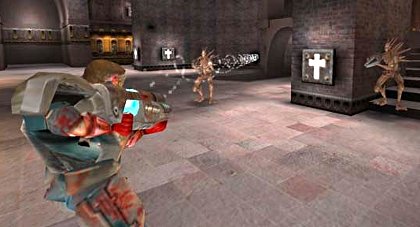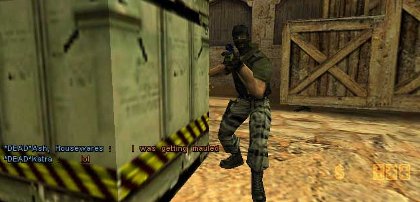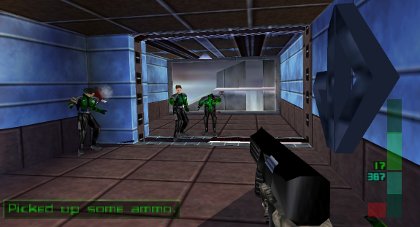Equally significant during 1999 was the release of Counter-Strike. Originally a multiplayer mod for Half-Life, it mushroomed into an online phenomenon. The simple premise of placing teams of terrorists and counter-terrorists into a series of superbly designed maps proved irresistible to millions, and undoubtedly helped shift more than a few copies of Half-Life along the way.
Played over several rounds, the concept of giving each team opposing objectives (such as planting/defusing bombs) was immediately engrossing, and won over those who had begun to tire of the deathmatch/capture the flag re-runs that comprised every other online FPS. It’s remarkable that a mod community project ended up one of the most significant titles in its genre of all time – proving to many a budding level designer that anyone with talent and dedication could get involved. Many big FPS developers would go on to treat mod communities as a source of new blood.
By the turn of the century the genre had matured rapidly, but with a few notable exceptions the console scene remained untapped. Rare reprised its success with GoldenEye with Perfect Dark on Nintendo 64 in 2000, and developers finally began to get some belated joy out of the PlayStation in the form of Medal of Honor, Alien Resurrection and a respectable port of Quake II, but there was simply no contest with the PC.
The release of the SEGA Dreamcast, however, provided the industry with a machine powerful enough to handle 3D accelerated titles. By 2000, a run of exceptionally faithful ports began to emerge on the potent new system, including Quake III Arena, Unreal Tournament, Rainbow Six and Half-Life (the latter mysteriously unreleased, despite being finished and issued to the press for review). The Dreamcast’s VGA capabilities, online play, keyboard and mouse support seemed a good fit for the FPS, but in practice slow loading times and the frankly awful pad held Sega’s console back.








 Satoru Iwata Video Interview - the late Nintendo president spoke with Kikizo in 2004 as 'Nintendo Revolution' loomed.
Satoru Iwata Video Interview - the late Nintendo president spoke with Kikizo in 2004 as 'Nintendo Revolution' loomed. Kaz Hirai Video Interview - the first of Kikizo's interviews with the man who went on to become global head of Sony.
Kaz Hirai Video Interview - the first of Kikizo's interviews with the man who went on to become global head of Sony. Ed Fries Video Interview - one of Xbox's founders discusses an epic journey from Excel to Xbox.
Ed Fries Video Interview - one of Xbox's founders discusses an epic journey from Excel to Xbox. Yu Suzuki, the Kikizo Interview - we spend time with one of gaming's most revered creators.
Yu Suzuki, the Kikizo Interview - we spend time with one of gaming's most revered creators. Tetris - The Making of an Icon: Alexey Pajitnov and Henk Rogers reveal the fascinating story behind Tetris
Tetris - The Making of an Icon: Alexey Pajitnov and Henk Rogers reveal the fascinating story behind Tetris Rare founders, Chris and Tim Stamper - their only interview? Genuinely 'rare' sit down with founders of the legendary studio.
Rare founders, Chris and Tim Stamper - their only interview? Genuinely 'rare' sit down with founders of the legendary studio. The History of First-Person Shooters - a retrospective, from Maze War to Modern Warfare
The History of First-Person Shooters - a retrospective, from Maze War to Modern Warfare
Quake 3 was better than UT…which is why it still gets played a decade later.
UT died on it’s ass.
Q3 continued to be played throughout worldwide competitions “professionally”.